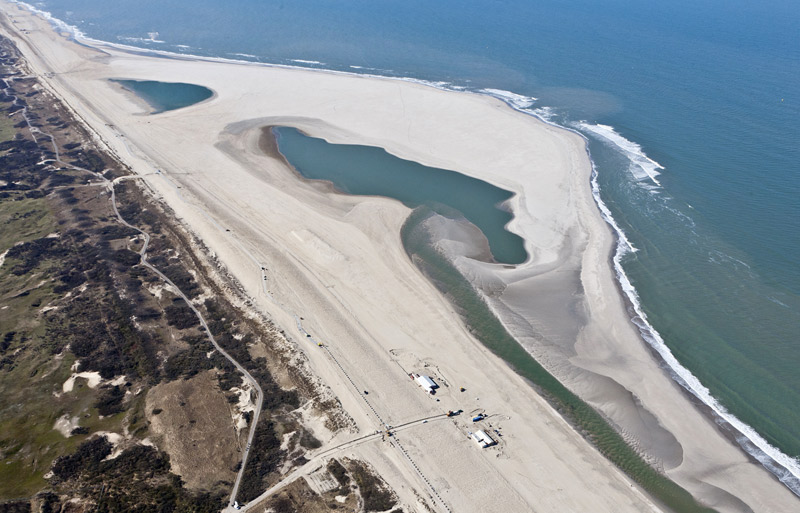A nice illustration of the difference between old and new approaches to resilient design:
In flood-prone Holland, the old approach was just: build a wall. The new approach is: work with nature, not against it, where you can. For centuries dikes (and natural dunes where they exist) have provided the primary defense against the North Sea for low-lying areas in the Netherlands. And while the Dutch continue to maintain, extend and elevate their system of dikes, they are also “increasingly relying on techniques that mimic natural systems and harness nature’s power to hold back the sea.” The Yale site Environment 360 reports:
This is the Sand Engine, one of the latest innovations from Dutch masters of flood control technology and designed, as the national water board Rijkswaterstaat says, so that “nature will take the sand to the right place for us.” After having constructed the country’s vaunted system of sea gates and dikes, Dutch planners and engineers are now augmenting it with new technology enlisting nature to keep the water at bay.
The approach is being monitored by US flood-control experts:
The two countries have different approaches to flood control, Needham acknowledged, with the Dutch focusing mainly on prevention, while Americans emphasize emergency preparedness and recovery. In the face of an uncertain future climate, however, the objectives are now converging. The goal, as Needham puts it, is “how to get people safer without putting a big wall up there.”
Posted originally by Resilient Design Institute http://www.resilientdesign.org
 Resilient Design – The old way: build a wall. The new way: work with nature.
Resilient Design – The old way: build a wall. The new way: work with nature.


